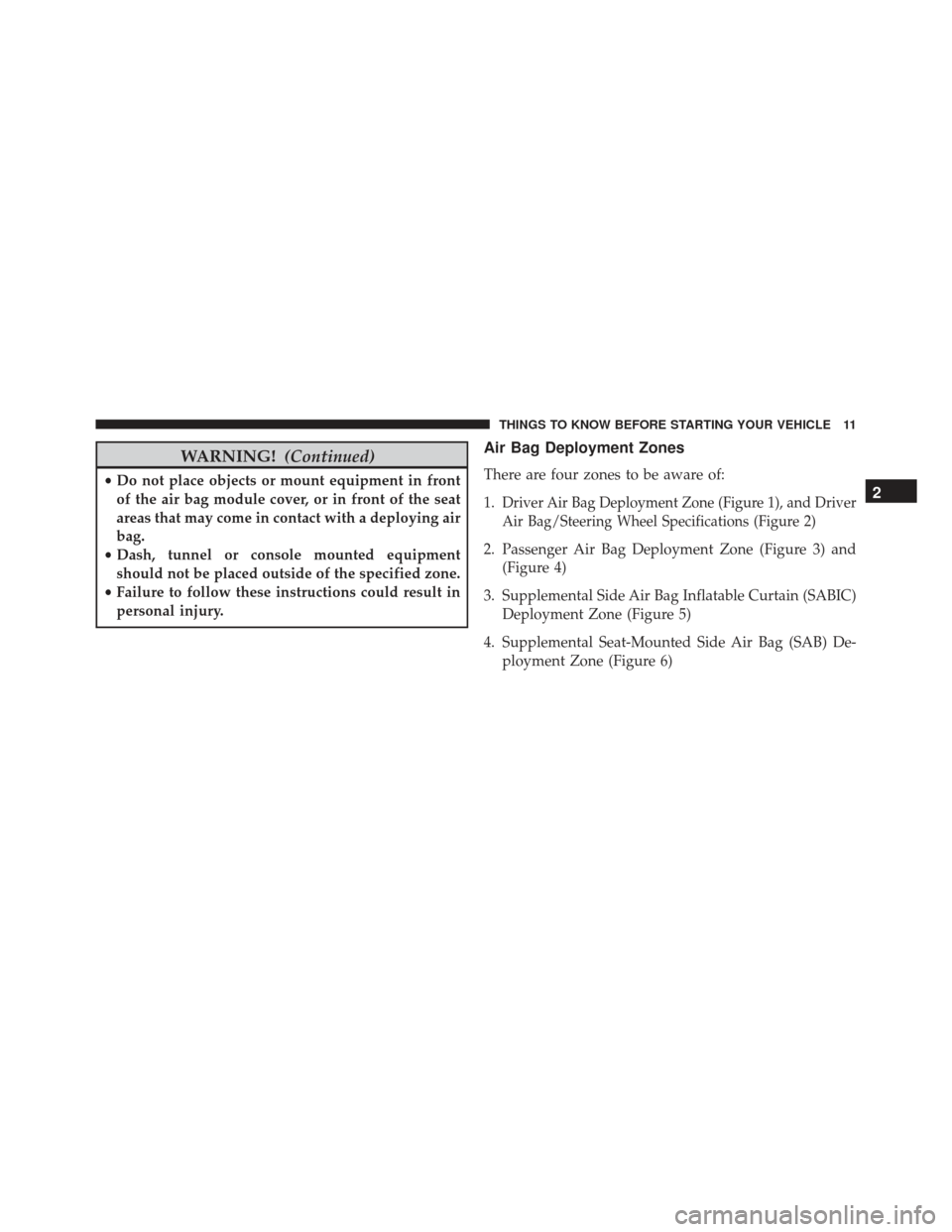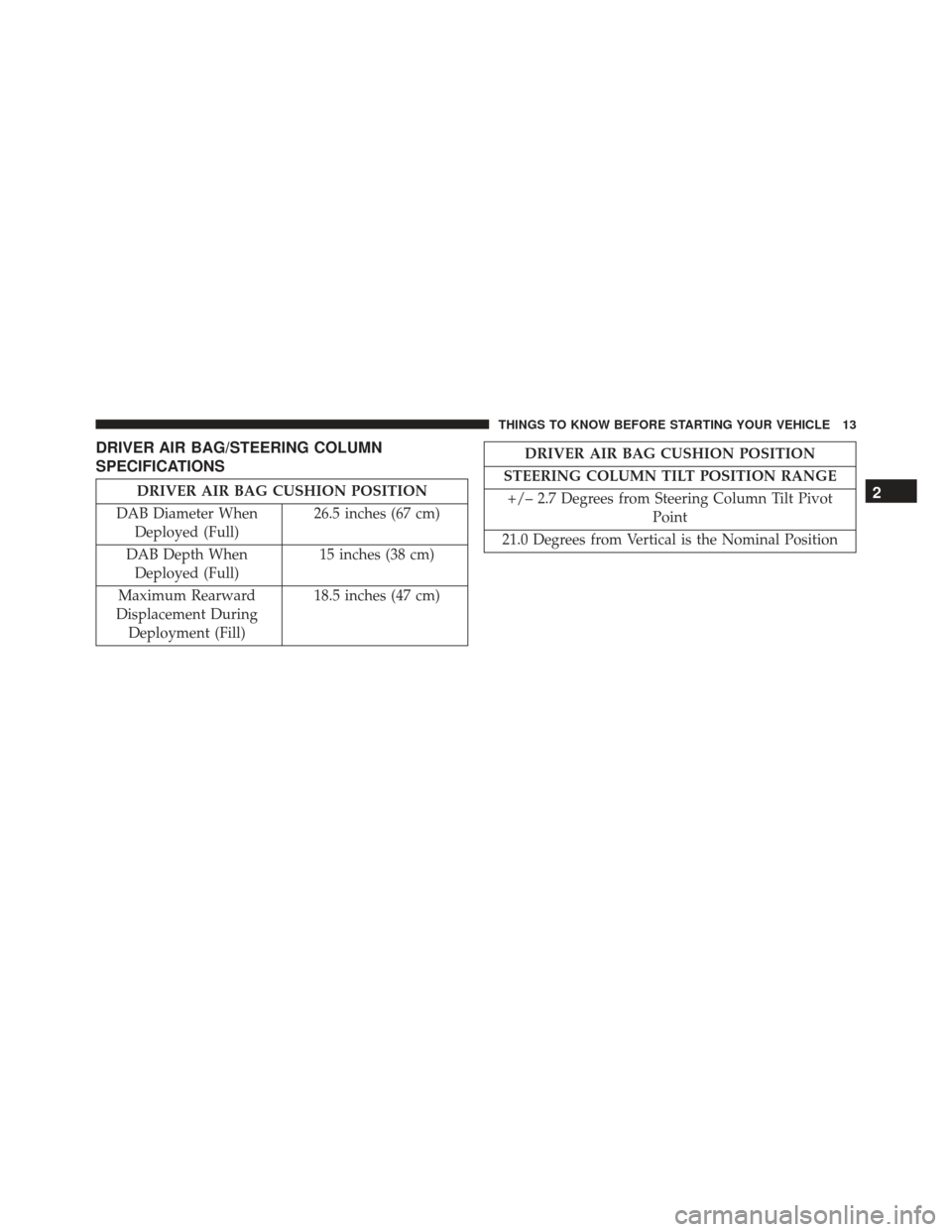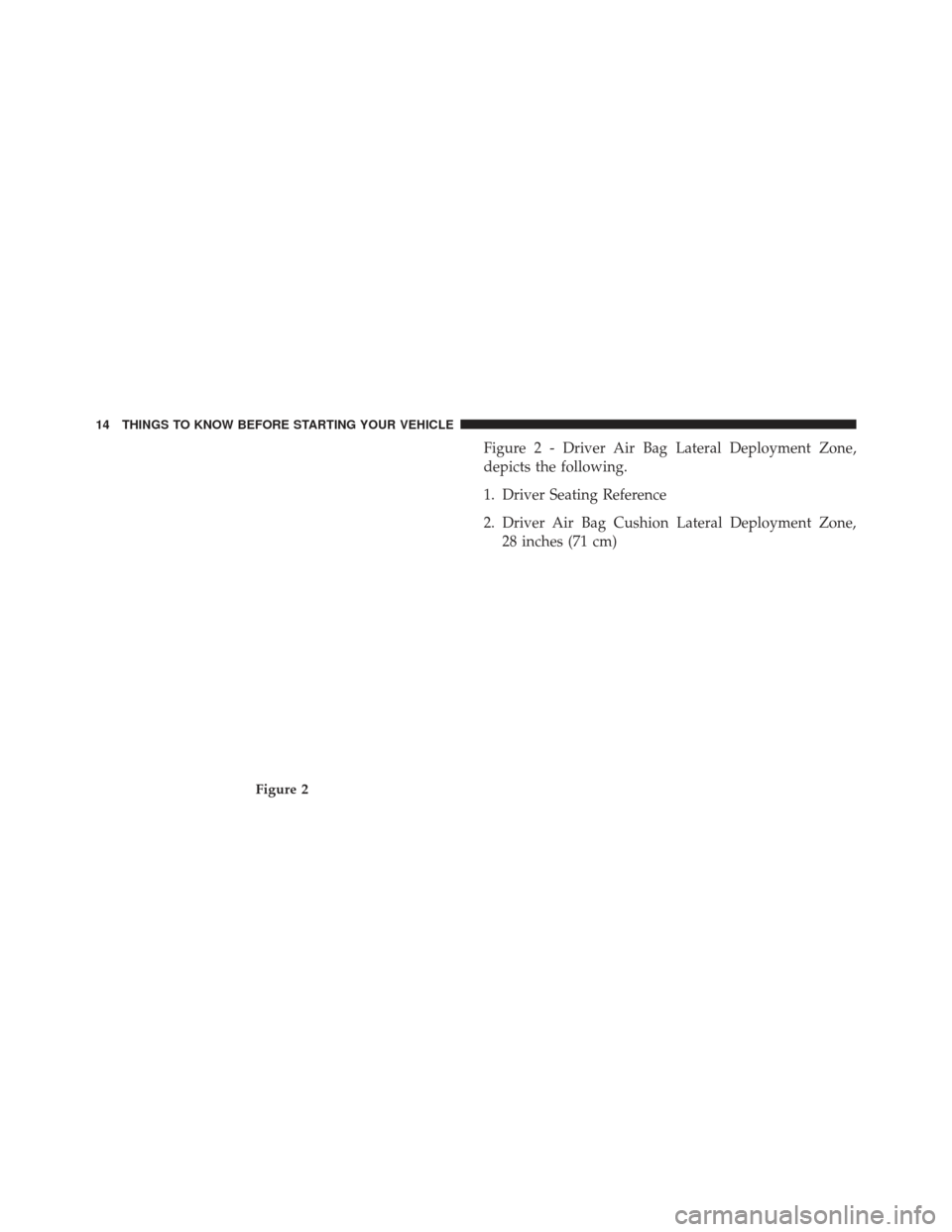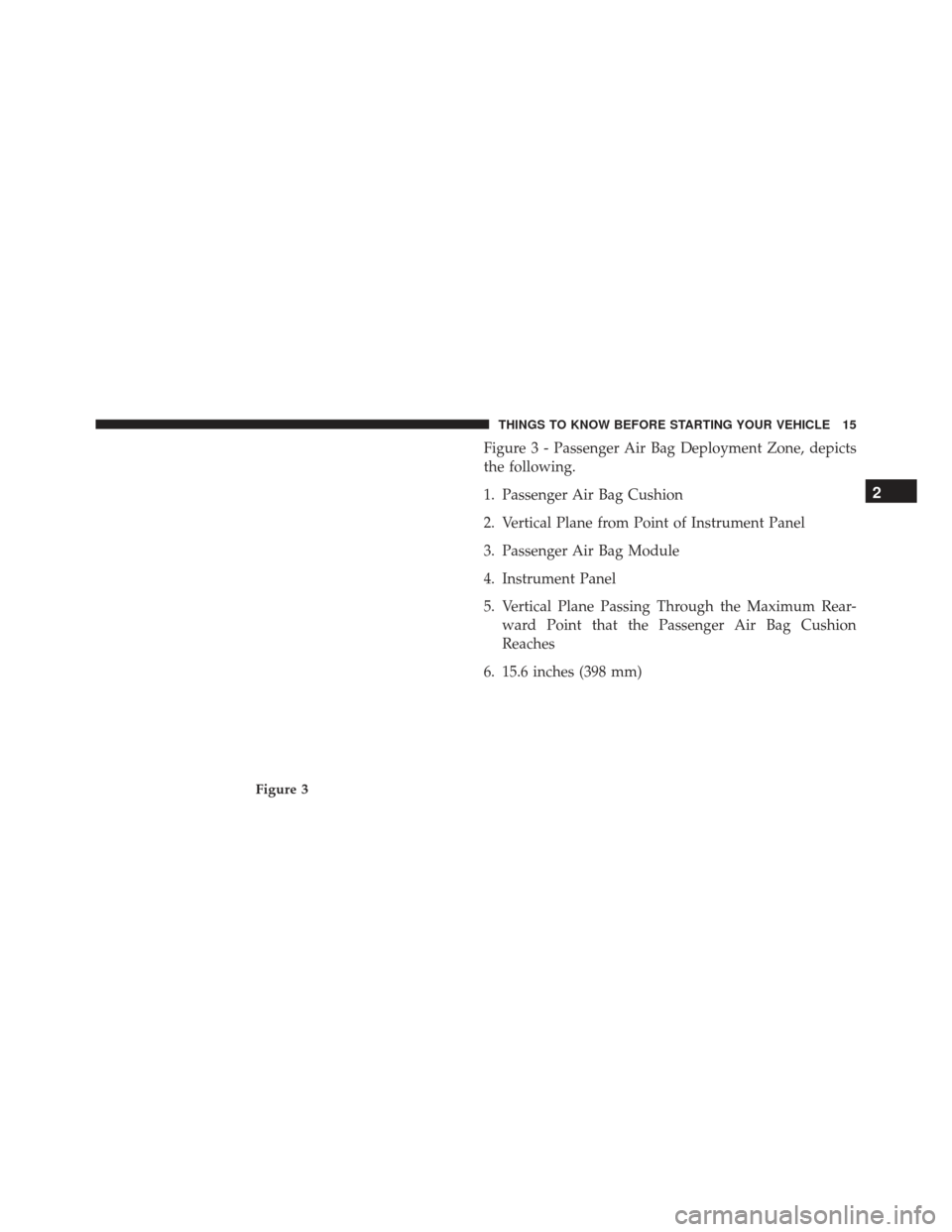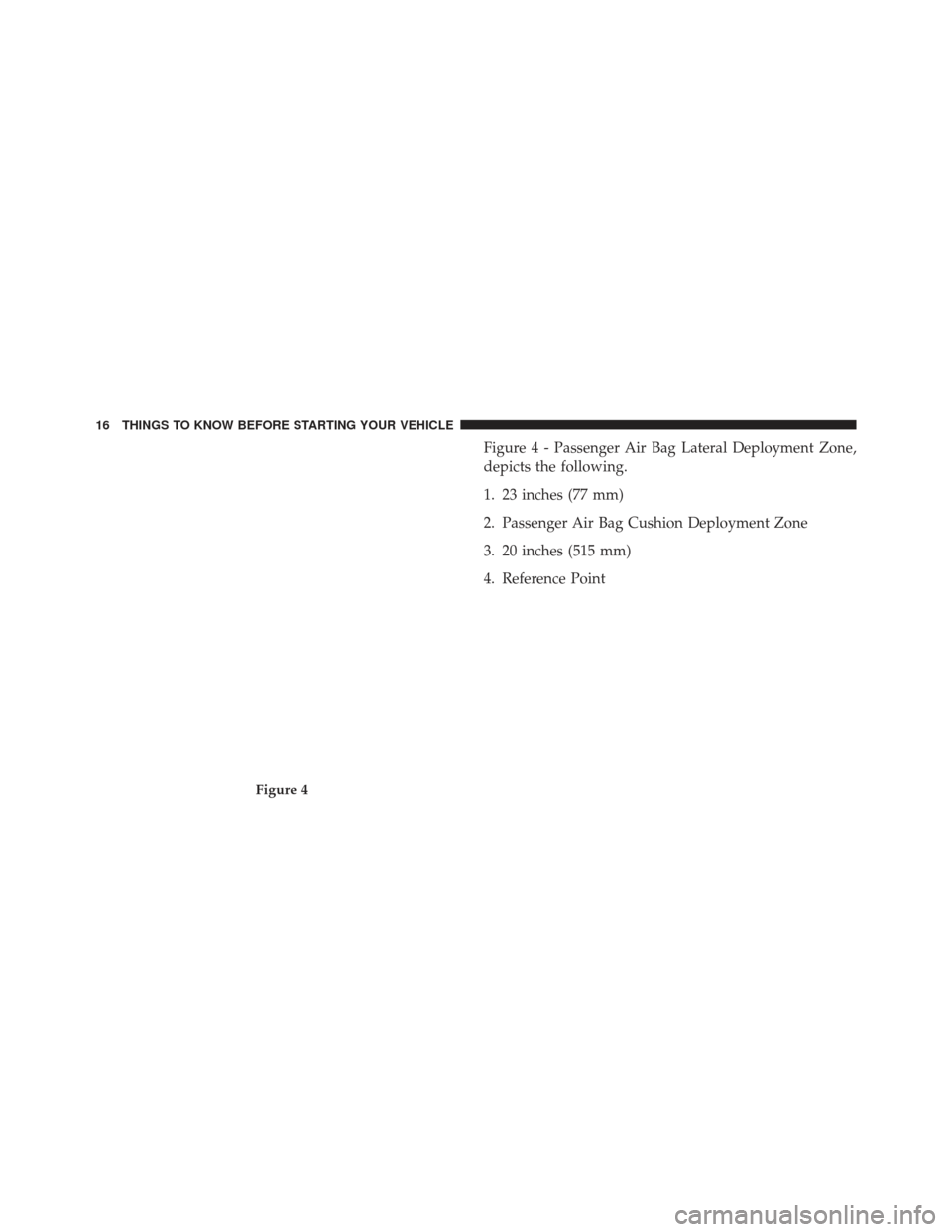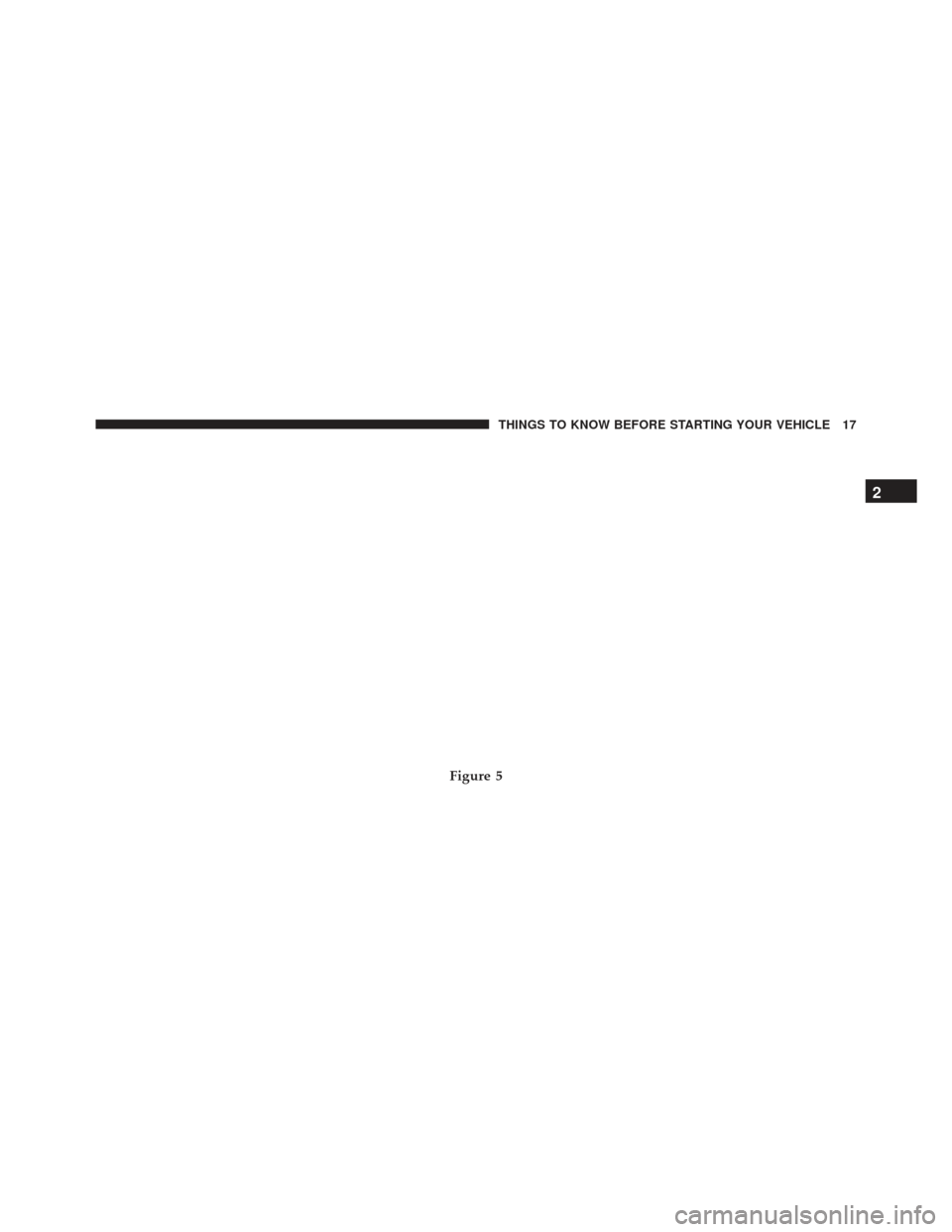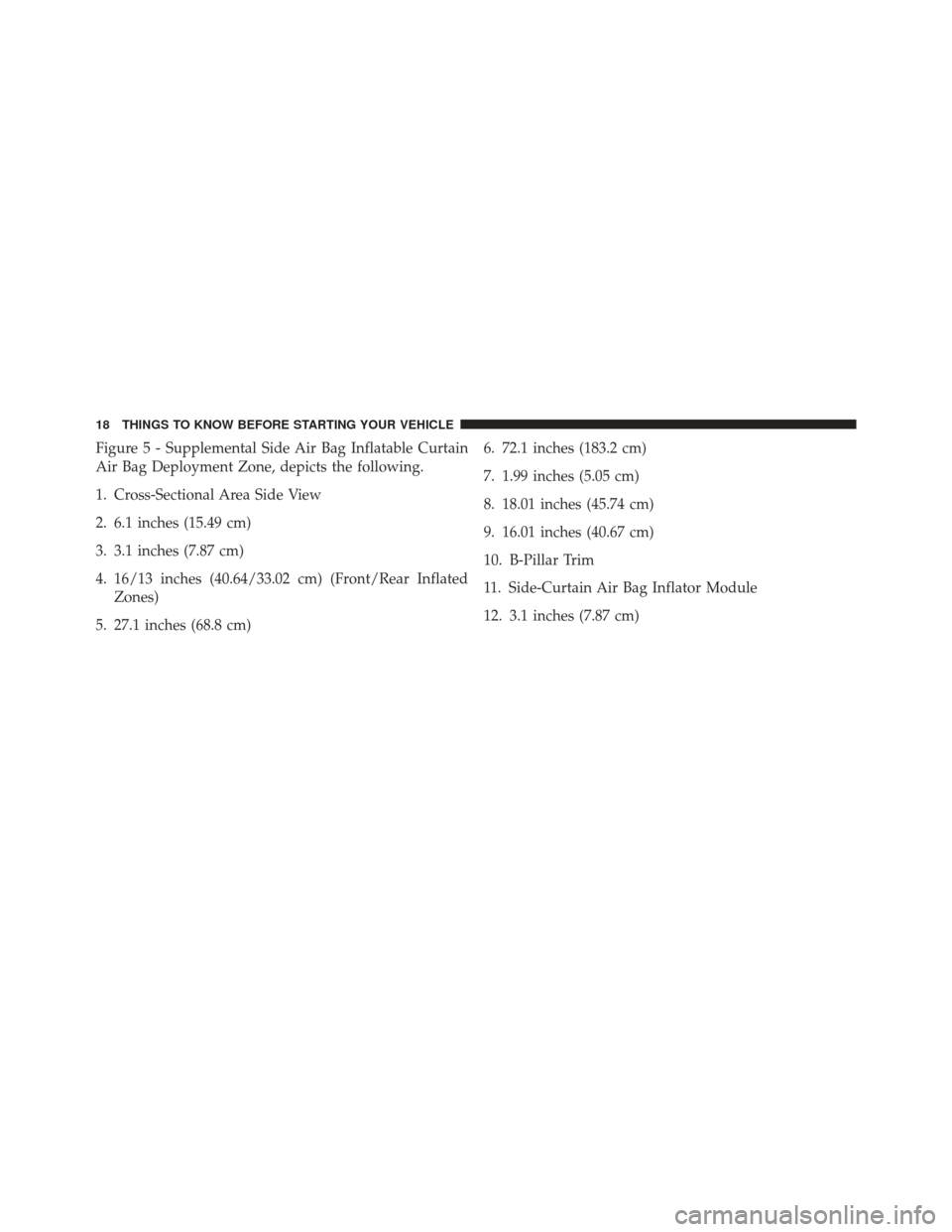DODGE DURANGO 2016 3.G Special Service Supplement Manual
DURANGO 2016 3.G
DODGE
DODGE
https://www.carmanualsonline.info/img/12/5620/w960_5620-0.png
DODGE DURANGO 2016 3.G Special Service Supplement Manual
Trending: window, maintenance, maintenance schedule, parking brake, key fob, alarm, child lock
Page 11 of 34
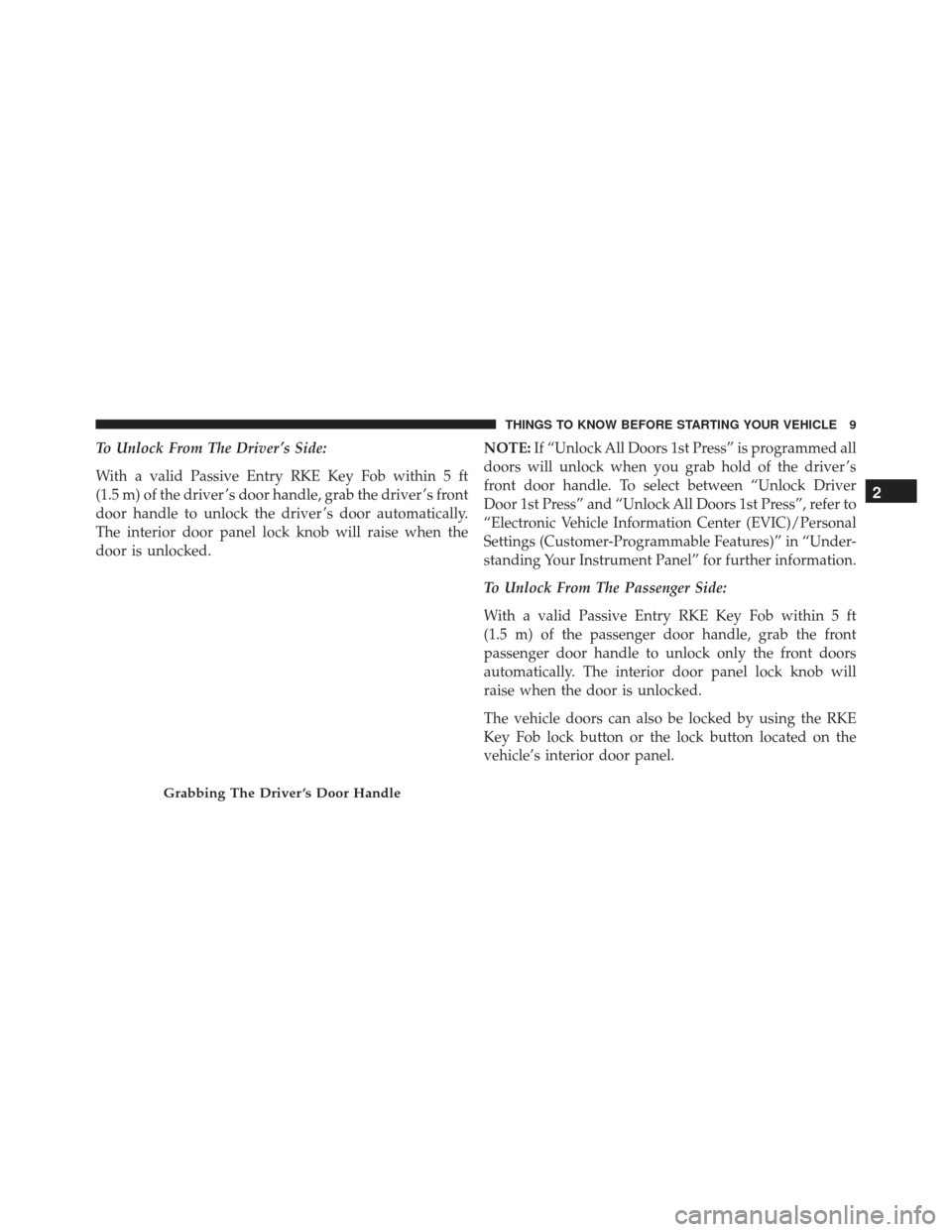
To Unlock From The Driver ’s Side:
With a valid Passive Entry RKE Key Fob within 5 ft
(1.5 m) of the driver ’s door handle, grab the driver ’s front
door handle to unlock the driver ’s door automatically.
The interior door panel lock knob will raise when the
door is unlocked.NOTE:
If “Unlock All Doors 1st Press” is programmed all
doors will unlock when you grab hold of the driver ’s
front door handle. To select between “Unlock Driver
Door 1st Press” and “Unlock All Doors 1st Press”, refer to
“Electronic Vehicle Information Center (EVIC)/Personal
Settings (Customer-Programmable Features)” in “Under-
standing Your Instrument Panel” for further information.
To Unlock From The Passenger Side:
With a valid Passive Entry RKE Key Fob within 5 ft
(1.5 m) of the passenger door handle, grab the front
passenger door handle to unlock only the front doors
automatically. The interior door panel lock knob will
raise when the door is unlocked.
The vehicle doors can also be locked by using the RKE
Key Fob lock button or the lock button located on the
vehicle’s interior door panel.
Grabbing The Driver ’s Door Handle
2
THINGS TO KNOW BEFORE STARTING YOUR VEHICLE 9
Page 12 of 34
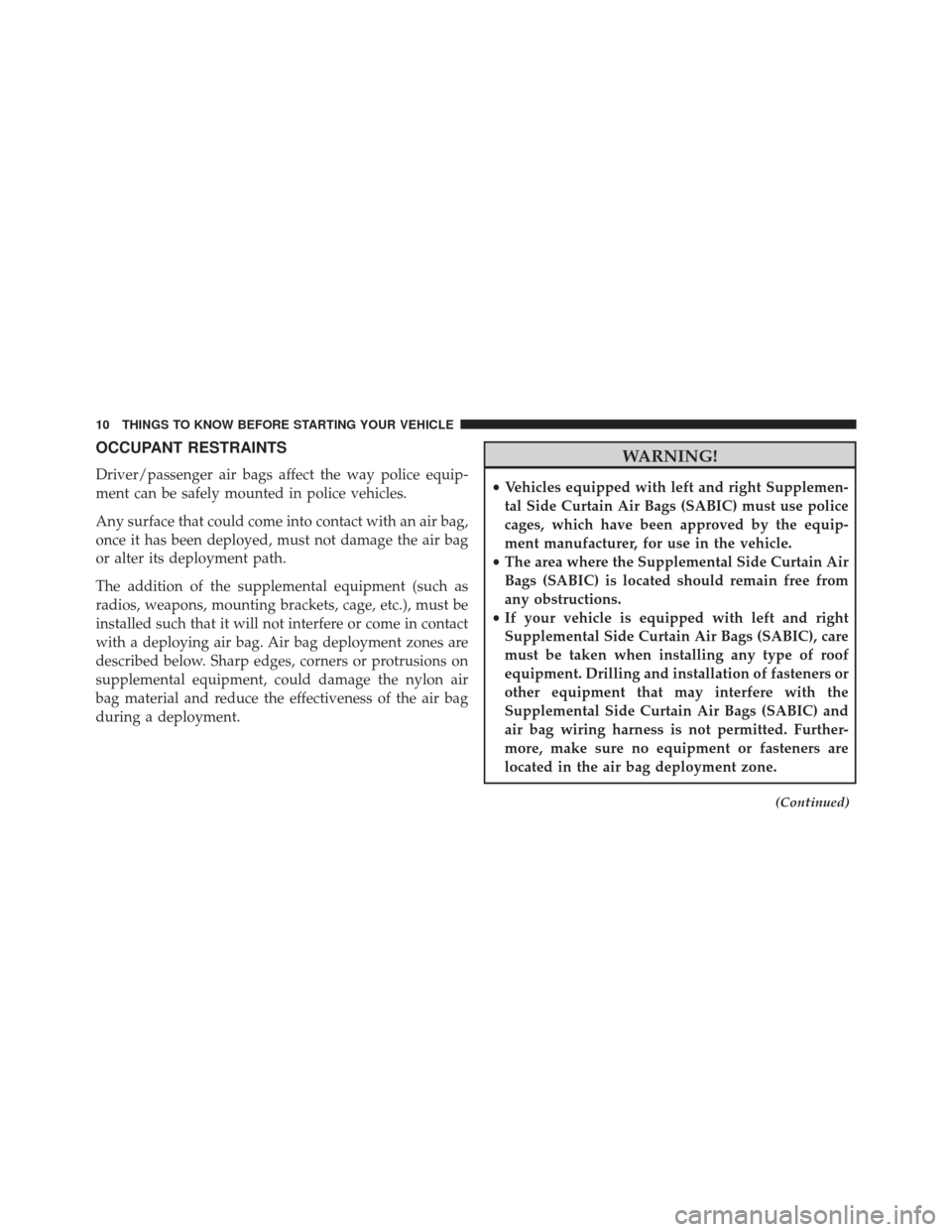
OCCUPANT RESTRAINTS
Driver/passenger air bags affect the way police equip-
ment can be safely mounted in police vehicles.
Any surface that could come into contact with an air bag,
once it has been deployed, must not damage the air bag
or alter its deployment path.
The addition of the supplemental equipment (such as
radios, weapons, mounting brackets, cage, etc.), must be
installed such that it will not interfere or come in contact
with a deploying air bag. Air bag deployment zones are
described below. Sharp edges, corners or protrusions on
supplemental equipment, could damage the nylon air
bag material and reduce the effectiveness of the air bag
during a deployment.
WARNING!
•Vehicles equipped with left and right Supplemen-
tal Side Curtain Air Bags (SABIC) must use police
cages, which have been approved by the equip-
ment manufacturer, for use in the vehicle.
• The area where the Supplemental Side Curtain Air
Bags (SABIC) is located should remain free from
any obstructions.
• If your vehicle is equipped with left and right
Supplemental Side Curtain Air Bags (SABIC), care
must be taken when installing any type of roof
equipment. Drilling and installation of fasteners or
other equipment that may interfere with the
Supplemental Side Curtain Air Bags (SABIC) and
air bag wiring harness is not permitted. Further-
more, make sure no equipment or fasteners are
located in the air bag deployment zone.
(Continued)
10 THINGS TO KNOW BEFORE STARTING YOUR VEHICLE
Page 13 of 34
WARNING!(Continued)
•Do not place objects or mount equipment in front
of the air bag module cover, or in front of the seat
areas that may come in contact with a deploying air
bag.
• Dash, tunnel or console mounted equipment
should not be placed outside of the specified zone.
• Failure to follow these instructions could result in
personal injury.
Air Bag Deployment Zones
There are four zones to be aware of:
1.
Driver Air Bag Deployment Zone (Figure 1), and Driver
Air Bag/Steering Wheel Specifications (Figure 2)
2. Passenger Air Bag Deployment Zone (Figure 3) and (Figure 4)
3. Supplemental Side Air Bag Inflatable Curtain (SABIC) Deployment Zone (Figure 5)
4. Supplemental Seat-Mounted Side Air Bag (SAB) De- ployment Zone (Figure 6)
2
THINGS TO KNOW BEFORE STARTING YOUR VEHICLE 11
Page 14 of 34
Figure 1 - Driver Air Bag Deployment Zone, depicts the
following.
1. Vertical Plane Passing Through Center of SteeringWheel
2. 18.5 inches (47 cm)
3. Vertical Plane Passing Through Maximum Rearward Point that the Driver Air Bag Cushion Reaches
4. Steering Wheel
5. Driver Air Bag Retainer/Housing
6. Driver Air Bag Cushion
Figure 1
12 THINGS TO KNOW BEFORE STARTING YOUR VEHICLE
Page 15 of 34
DRIVER AIR BAG/STEERING COLUMN
SPECIFICATIONS
DRIVER AIR BAG CUSHION POSITION
DAB Diameter When Deployed (Full) 26.5 inches (67 cm)
DAB Depth When Deployed (Full) 15 inches (38 cm)
Maximum Rearward
Displacement During Deployment (Fill) 18.5 inches (47 cm)
DRIVER AIR BAG CUSHION POSITION
STEERING COLUMN TILT POSITION RANGE +/– 2.7 Degrees from Steering Column Tilt Pivot Point
21.0 Degrees from Vertical is the Nominal Position
2
THINGS TO KNOW BEFORE STARTING YOUR VEHICLE 13
Page 16 of 34
Figure 2 - Driver Air Bag Lateral Deployment Zone,
depicts the following.
1. Driver Seating Reference
2. Driver Air Bag Cushion Lateral Deployment Zone,28 inches (71 cm)
Figure 2
14 THINGS TO KNOW BEFORE STARTING YOUR VEHICLE
Page 17 of 34
Figure 3 - Passenger Air Bag Deployment Zone, depicts
the following.
1. Passenger Air Bag Cushion
2. Vertical Plane from Point of Instrument Panel
3. Passenger Air Bag Module
4. Instrument Panel
5. Vertical Plane Passing Through the Maximum Rear-ward Point that the Passenger Air Bag Cushion
Reaches
6. 15.6 inches (398 mm)
Figure 3
2
THINGS TO KNOW BEFORE STARTING YOUR VEHICLE 15
Page 18 of 34
Figure 4 - Passenger Air Bag Lateral Deployment Zone,
depicts the following.
1. 23 inches (77 mm)
2. Passenger Air Bag Cushion Deployment Zone
3. 20 inches (515 mm)
4. Reference Point
Figure 4
16 THINGS TO KNOW BEFORE STARTING YOUR VEHICLE
Page 19 of 34
Figure 5
2
THINGS TO KNOW BEFORE STARTING YOUR VEHICLE 17
Page 20 of 34
Figure 5 - Supplemental Side Air Bag Inflatable Curtain
Air Bag Deployment Zone, depicts the following.
1. Cross-Sectional Area Side View
2. 6.1 inches (15.49 cm)
3. 3.1 inches (7.87 cm)
4. 16/13 inches (40.64/33.02 cm) (Front/Rear InflatedZones)
5. 27.1 inches (68.8 cm) 6. 72.1 inches (183.2 cm)
7. 1.99 inches (5.05 cm)
8. 18.01 inches (45.74 cm)
9. 16.01 inches (40.67 cm)
10. B-Pillar Trim
11. Side-Curtain Air Bag Inflator Module
12. 3.1 inches (7.87 cm)
18 THINGS TO KNOW BEFORE STARTING YOUR VEHICLE
Trending: keyless, display, lights, wheel, ECU, parking brake, keyless entry


